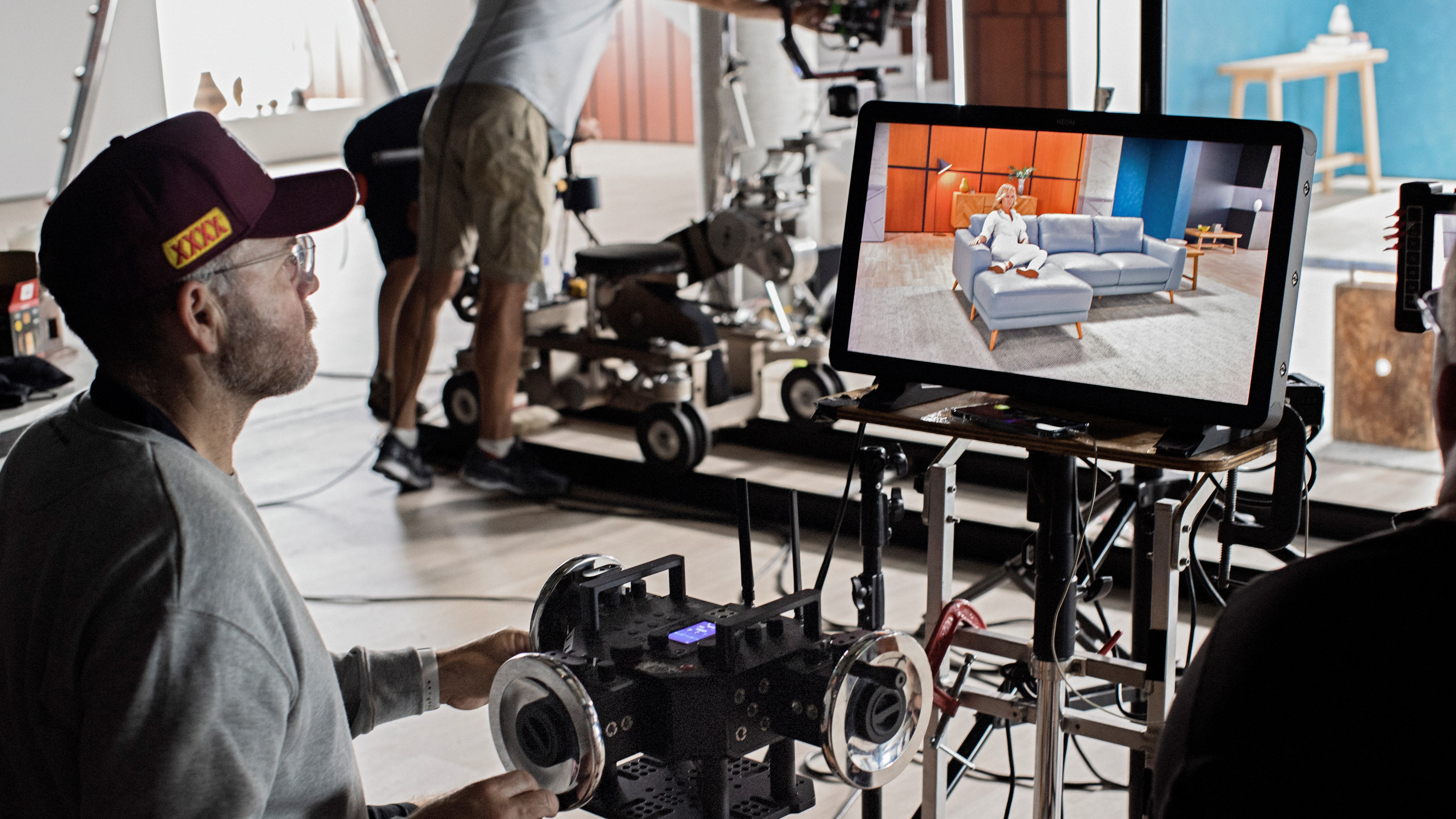Atomos Neon Connects Productions Across Continents
Production crews in London and Australia are able to work as if nearly side-by-side

LONDON—When the pandemic hit and the world went into lockdown, I had five TV commercials on the books. All were cancelled. My clients are all around the world and suddenly I found myself unable to get to Abu Dhabi or Sydney from where I live outside London. I had to reinvent myself and the way I worked, which is where the Atomos Neon 24-inch came in.
I’ve used Atomos products since the debut of the Canon C200. I’m a huge fan of the Shogun 7, which I consider to be the “Swiss Army knife” of camera-mounted monitors. Whenever something doesn’t connect or something doesn’t talk to something else—and some new cameras can be a pain in that regard—I’ve always managed to take something into the Shogun 7 and then pump it out to everything else. That’s saved us more than once.
So, when it came to speccing out the equipment I was going to need to be able to remotely direct TVCs, Atomos was the first company I thought of.
CONNECTED ACROSS THE WORLD
I now have an Atomos Neon 24 sitting on my desk and have just finished a six-day shoot working nights remotely directing a commercial for a furniture brand that was being shot in Australia. There’s another Neon 24 sitting in the studio over there and that means I can work with the DOP and we know we are looking at exactly the same picture in exactly the same color space every time.
We’re using Teradek to establish a point-to-point network between England and Australia, and we’ve got roughly a 500-millisecond delay from the camera to my Neon here streaming 4K over the 12,000-mile circuit.
We’re coming out of a Canon C500 in SDI, and because we’re shooting on a crane with a gimbal, the DOP is running an Atomos Shogun 7 on the camera and the picture is coming straight out of that into a Neon. We’ve got a patch system with a witness camera and the live camera feed. The team in Australia puts them together or encodes them separately, sends them back here where I decode them and they go straight into the Neon. We’re sending in Rec.709, but we could use 4K HDR if we wanted to.
It also loops into my lounge where I’ve got a second broadcast monitor if I want to sit on the sofa and look at things. I’m also recording all my takes now—I’m able to sit here and watch all the takes back without waiting for things to be uploaded into the cloud, and that has made a big difference.
The professional video industry's #1 source for news, trends and product and tech information. Sign up below.
I’m using Zoom to communicate with the crew and we’ve put a couple of radio mics on set so I can hear what’s going on and talk to people directly. When I’m directing, I usually go off into a closed space anyway, and a couple of times I’ve gone to get up from my desk here to talk to the crew before I’ve realized they are 12,000 miles away.
THE EDITING SETUP
The next step is the color grade. The Australia-based Neon is taken to the client’s office and looped onto a big screen in the boardroom. We color grade in Blackmagic’s DaVinci Resolve from here and have the confidence that the two pictures will match exactly.
In the past, because it was really expensive to have the same monitor at each end, everyone ended up with a different monitor and a different picture. The Neon though makes it work. Clients like it too. I think it’s a workflow I’ll continue post-COVID.
Brett Danton has worked alongside some of the most iconic brands, including Emirates, Jeep, Canon and Land Rover, for more than 20 years. He has traveled the world working as a director, DOP and photographer. He can be contacted at brett@brettdanton.tv.
For more information, contact Atomos at 503-388-3236 or visit www.atomos.com.
